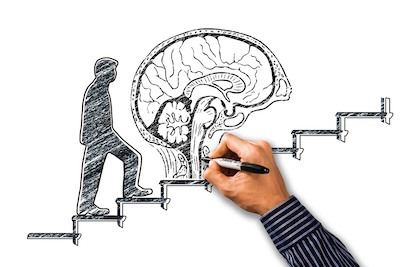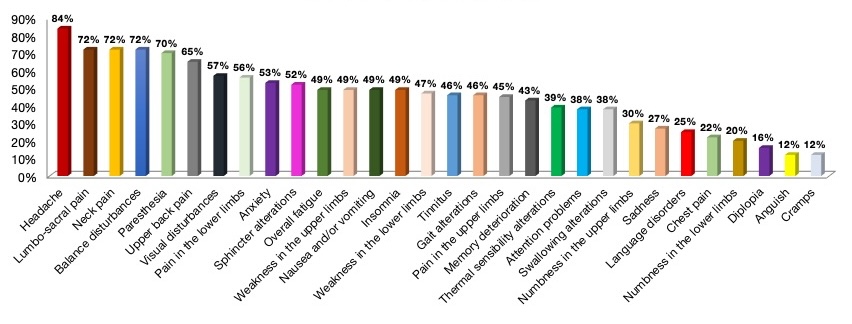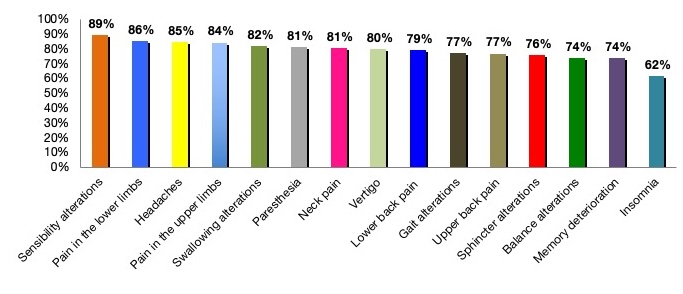Symptoms of Filum Disease and Neuro-cranio-vertebral Syndrome: before and after the treatment according to the Filum System®
Published by ICSEB at 24 January, 2025
 Many patients diagnosed with Arnold-Chiari Type I syndrome, Idiopathic Syringomyelia, Idiopathic Scoliosis, or other conditions related to Filum Disease (FD) often wonder if some of the symptoms they experience are due to these diagnoses, because they don’t seem to be typical symptoms of these conditions.
Many patients diagnosed with Arnold-Chiari Type I syndrome, Idiopathic Syringomyelia, Idiopathic Scoliosis, or other conditions related to Filum Disease (FD) often wonder if some of the symptoms they experience are due to these diagnoses, because they don’t seem to be typical symptoms of these conditions.
In fact, many doctors aren’t always aware of the wide range of disorders that FD can cause, and as a result, they may question whether there are other underlying conditions, which can unnecessarily prolong the diagnostic phase by failing to recognise the full picture.
Over nearly 50 years of experience working with patients with these conditions, Dr. M. B. Royo-Salvador and his team have confirmed that Neuro-cranio-vertebral Syndrome (NCVS) – the result of an abnormal traction on the Central Nervous System transmitted through a tense Filum Terminale – can lead to a complex and sometimes unpredictable clinical picture, even for experts.
Thanks to their research on the etiology of cerebellar tonsil descent, intramedullary cavities, spinal deviations, etc., our specialists approach each patient’s case understanding that their symptoms might go beyond what is typically attributed to these conditions.
Graph I shows the symptoms reported in a sample of 373 patients with FD and NCVS. Along with the most common symptoms of Arnold Chiari I , such as headaches, dizziness, back pain, paresthesias, fatigue, tinnitus, and dysphagia – and Idiopathic Syringomyelia , including balance alterations, limb pain, gait issues, and alterations in thermal sensibility, there are other frequently occurring symptoms in significant percentages: anxiety (53%), sphincter alterations (52%), insomnia (49%), memory deterioration (43%), attention issues (38%), depression (27%), language disorders (25%), diplopia (16%), and cramps (12%).
Among the sphincter alterations, the most common are urinary urgency, incontinence, diarrhoea, constipation, and occasionally, faecal incontinence. These symptoms are usually associated with other syndromes, like tethered cord syndrome and occult tethered cord syndrome, which can cause confusion, as Filum Disease can also lead to Arnold-Chiari I, isolated idiopathic syringomyelia and idiopathic scoliosis.

Graph I – Extract from “Filum Disease – A Guide for Patients” by M. B. Royo Salvador, 2024, “The Diagnosis”.
Along with diplopia, other visual disturbances such as blurred vision and photophobia are also common. As for hearing disorders, alongside tinnitus, hearing loss and sonophobia are also observed. Many doctors refer patients to ophthalmologists or ENT specialists, respectively, to assess these symptoms.
Neuropsychological issues typically involve cognitive functions, such as attention, concentration, memory (both anterograde and retrograde) and language (nominal and articulate), as well as mood, including irritability, sadness and even anxiety. Only in recent years they started to take into consideration psychological symptoms in the diagnosis of Arnold-Chiari I, but there can still be diagnostic confusion within the psychological sphere.
In reality, these symptoms can significantly limit and affect a patient’s quality of life, just as much as the more well-known symptoms, and are often found in those affected.
The aim of the treatment according to the Filum System® (FS®) is to halt the progression of the disease, preventing further damage to the nervous system. However, in the majority of cases seen by our team, we observe significant improvements in most patients.
In Graph II, the results are shown for another sample of 240 patients, one year after undergoing the sectioning of the Filum Terminale using the minimally invasive FS® technique.

Graph II – Extract from “Filum Disease – A Guide for Patients” by M. B. Royo Salvador, 2024, “FS® Results in FD”.
The results show the high frequency of cases where symptoms, both those considered typical of these conditions and those not usually recognised as such, improve, each one with high percentages. The “Patient Guide” (available on Amazon: https://amzn.eu/d/aE3gqKr) also provides details on the outcomes for each condition.
In conclusion, despite the wide variety and general lack of knowledge regarding the symptoms of FD and NCVS, patients can be confident that treatment with the Filum System® method can significantly improve their quality of life.


















